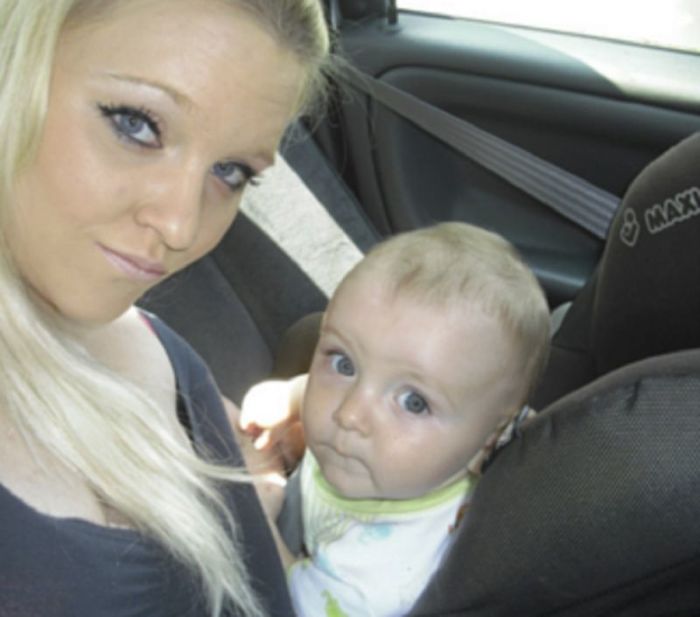Norway Took Baby From This American Mom; She Is Still Fighting for Her Son 5 Years Later

It's been nearly four years since American citizen Amy Jakobsen Bjørnevåg has seen her son, Tyler, after he was taken away from her and put in foster care by Norway's child protection service because of a weight issue.
Born in Brooklyn, New York, and having spent much of her childhood in New Jersey, Bjørnevåg and her family moved to the Scandinavian country where her father was born when she was 12.
After giving birth to her son at the age of 18, she took Tyler to regularly scheduled check-ups at her local health station. Although her son's weight curve flattened a bit as she had troubles getting him to eat solid foods, Bjørnevåg never had any major issues with the Norwegian government until Tyler was 19 months old.
She will never forget the day that her "worst nightmare" began. It was July 23, 2013.
On that day, agents from Barnevernet (Norway's child protection service agency) and police officers went to Bjørnevåg's home in Lyngdal and forced the young mom, her son and the baby's father, Kevin, to go to a hospital where they were put on "lockdown" while the baby was examined by a doctor.
The mother was accused of still nursing her son and accused of not "pushing solids enough." While she was told that Tyler should weigh 22 pounds (10 kilograms) instead of 21 pounds (9.6 kilograms), it was also determined that Tyler had a Vitamin B12 deficiency.
What seemed like minor health issues at the time turned into a life-altering whirlwind that ended with Bjørnevåg being stripped of her parental rights even though she says that the agency never bothered to conduct a full and fair investigation to see how she was as a mother.
"In cases like this, you would usually see authorities evaluate the mother or the caregiver. They haven't tried and are reluctant to even do that [in my case]," Bjørnevåg told The Christian Post over the phone. "They do it with a psychologist who is neutral to see how my caregiving skills are and how I am as a person. That has never even been a part of the case. So they can take a child and remove him without even considering how I am as a mother? I don't understand how that could work in the system."
Bjørnevåg is not alone in the heartbreak and frustration of having a child locked in the strong grasp of a child welfare system that some critics say excessively intervenes to separate families and seemingly has a troubling pattern of removing children from ethnic immigrant parents.
Over the last several years, Barnevernet has gained international scrutiny as many families and their supporters have raised their voices in outrage, saying that the agency has violated their human rights and wrongfully removed their children for a wide variety of reasons and put them into foster care.
Bjørnevåg said that she was made to believe that it was her fault that Tyler had trouble eating solid foods even though she had asked for help from her doctor and the health station. She says that one of the reasons the agency took her son away from her at the hospital was because they feared that she could escape with him back to the United States.
To make matters worse, Bjørnevåg was told about a year after her son was removed from her home that she no longer had a right to even visit with him during the limited hours she was granted each week to do so.
"It's heartbreaking"
Bjørnevåg recalls the last day she saw her son — Sept 22, 2014.
To this day, authorities won't tell Bjørnevåg where Tyler is located as he's now of primary school age.
Her lawyer told her that court records indicate that authorities have changed Tyler's name on different occasions to something "more Norwegian." One previous name that Tyler was given before it was changed again was "Jackob Michelsen," she said. She doesn't know what name has currently been assigned to her son.
"It is heartbreaking," she said of the fact that she's been absent from most of her 6-year-old son's life. "I feel like I can't breathe."
After losing hearings before a county welfare board and district court, Bjørnevåg is still fighting an uphill battle to see her son.
As families have the right to file for a revocation of a removal order, she had to wait at least one year after her previous hearing in 2016 for her case to be eligible to be heard again.
"My lawyer filed for a [new hearing] in June 2017 and it was supposed to take three months. They ignored it for almost a year now. Finally, it is getting up hopefully in the beginning of September," she said. "I was naive in the beginning in thinking that the judges will look at this and see what is right. You don't have a chance to win regular court cases here. You need to put pressure on the government, I mean severe pressure for anything to help."
As Barnevernet removal orders (also called care orders) must be approved by one of 12 county welfare boards, statistics show that the county welfare boards side with Barnevernet in about 91 percent of removal order cases.
A review of all Norwegian care order decisions from 2012 through 2016 shows that the average age of children subject to care orders are 3.5 months old. The review also shows that parents agreed to placing children in foster care in only 27 percent of the cases.
According to the Norwegian Directorate for Children, Youth and Family Affairs, 1,545 children were subject to a care order approved by a county welfare board during the course of 2015, which is about 1.4 children per 1,000 0-17-year-olds.
Although parents are entitled to file for a revocation of care orders, the department shared that only 34 percent of children (173 out of 508) in cases where parents filed for care order revocation in 2017 were actually returned to their families.
"The County Social Welfare Board or the District Court is entitled to revoke a care order when it is highly probable that the parents will be able to provide the child with proper care," Kristin Ugstad Steinrem, the head of the Norwegian Directorate for Children, Youth and Family Affairs, told CP in a statement.
Although Steinrem could not comment specifically on Bjørnevåg's case, she asserted there are "strict conditions" for the issuance of a removal order under the Norwegian Child Welfare Act."
She explained that children can be taken for a number of reasons that include serious deficiencies in everyday care, parents failing to "ensure that a child who is ill, disabled or in special need of assistance receives the treatment and training required." Other reasons are if children are being mistreated or abused at home or if parents are not adequately taking responsibility for the child.
"A care order is always a last resort, and cannot be made if voluntary measures can provide satisfactory conditions for the child," Steinrem claimed.




























